
Affordable Tuition Fees: Start your medical career without breaking the bank. Nepal offers high-quality medical education at a fraction of the cost compared to India or other countries.
No IELTS/TOEFL Required: Simplified admission process with no language test requirements.
Globally Recognized Degrees: MBBS programs in Nepal are approved by NMC, WHO, and UNESCO, ensuring your degree is internationally credible.
Cultural and Geographic Proximity: Enjoy a shared cultural heritage, Indian food availability, and easy travel between Nepal and India.
High-Quality Facilities: Top medical universities in Nepal provide well-equipped labs, experienced faculty, and extensive clinical exposure.
English as a Medium of Instruction: Universities primarily teach in English, making it easier for Indian students to adapt.
State-of-the-Art Facilities: Nepal’s medical universities are equipped with modern laboratories, advanced teaching tools, and state-of-the-art hospitals for clinical training. Practical exposure starts early in the program, ensuring students develop the skills needed for real-world medical challenges.
No IELTS/TOEFL Requirement: Admission to medical colleges in Nepal does not require English proficiency exams like IELTS or TOEFL, simplifying the enrolment process and making it accessible for students.
Global Career Opportunities: Nepalese MBBS degrees are recognized globally by NMC, WHO, and UNESCO, ensuring students can pursue careers or higher education in India, the USA, the UK, and other countries.
Affordable Education: MBBS fees in Nepal are budget-friendly, ranging from INR 40 Lakhs to 60 Lakhs (approximately $50,000 to $75,000) for the complete course, making it more affordable compared to private medical colleges in India and other foreign destinations.
Scholarships and Instalment Options: Many universities offer merit-based scholarships and provide students the option to pay fees in instalments, easing financial burdens on families.
Inclusive Eligibility: Indian students who pass NEET with a minimum of 50% in PCB in 12th grade (40% for reserved categories) are eligible to apply. Students from CBSE, ICSE, and state boards can easily meet the eligibility requirements.
Familiar Curriculum: The MBBS syllabus in Nepal closely resembles the Indian MBBS curriculum, ensuring a smooth transition for Indian students. This similarity also contributes to higher passing rates for the NEXT exam in India.
Cultural Proximity and Indian Food: With shared cultural values and cuisines similar to Indian food, students face minimal cultural adjustment. Many universities have Indian mess facilities, offering home-like meals at affordable prices.
Comprehensive Course Duration: The MBBS program in Nepal lasts for 5 years and 6 months, including 4.5 years of academic study and a 1-year mandatory internship. This duration aligns with global medical education standards.
| Particulars | Details |
|---|---|
| Intake Periods | September |
| 10+2 score Requirements | Minimum 50% in PCB (40% for reserved categories) |
| NEET Requirement | Mandatory for admission |
| Fees in Nepal | INR 45–75 Lakhs (varies by university) |
| Hostel Expenses/Month | INR 10,000–15,000 |
| Duration | 5 years + 1-year internship |
| Medium of Instruction | English |
| Top Medical Universities | BP Koirala Institute, Kathmandu Medical College, Manipal Medical College |
|
MBBS Nepal Recognition |
Approved by NMC, WHO, UNESCO |
Schedule a counselling session to discuss your academic background, career goals, and preferences. Academic consultants can help shortlist universities that suit your budget and eligibility.
10th and 12th grade mark sheets
School leaving certificate
NEET scorecard
Birth certificate
Certificate of conduct
Valid passport
Recent passport-size photographs
Note: Ensure all documents are translated into Nepali and verified with notary stamps and apostilles, if required.
Choose a medical university based on rankings, fee structures, and facilities. Popular choices include:
BP Koirala Institute of Health Sciences
Kathmandu Medical College
Manipal College of Medical Sciences
Complete the online application form on the chosen university’s official website. Attach the required documents and pay the application fee as per the university’s policy.
Once your application is reviewed and accepted, you will receive an official Invitation Letter from the university. This letter is essential for securing your student visa.
Apply for a student visa by submitting the university’s invitation letter along with other required documents (financial proofs, passport, etc.) to the Nepalese Embassy. Once your visa is approved, book your flight to Nepal and inform the university about your arrival.
Age Requirement: Students must be at least 17 years old by December 31 of the admission year. There is no upper age limit.
Educational Qualification: Candidates must have passed 10+2 or equivalent with Physics, Chemistry, Biology (PCB) as core subjects.
Marks Required: General Category: 50% aggregate in PCB and for Reserved Categories: 40% aggregate in PCB.
NEET Requirement: Qualifying the NEET exam is mandatory for Indian students applying for MBBS in Nepal.
Entrance Exam: Some universities in Nepal may require students to clear their own entrance exams, like the MECEE BL conducted by Tribhuvan University.
Language of Study: Students must have studied in English or had English as one of the core subjects in school.
Additional Requirements: An eligibility certificate issued by the National Medical Commission (NMC) is required for Indian students to practice in India after graduation.
Indian students pursuing MBBS in Nepal can benefit from several scholarship schemes and education loan options designed to ease their financial burden. Below is a detailed overview:
Government Scholarships:
SAARC Scholarship Scheme: Offers financial aid to students from SAARC countries.
Nepal Aid Fund Scholarship Scheme: Provides funding for Indian and Nepali students based on academic performance and need.
Mahatma Gandhi Scholarship Scheme: Focused on Indian students excelling academically.
Private Scholarships:
Zolve Global Scholarship: Offers need-based scholarships to international students, including those in Nepal.
Scholarships from NGOs: Several NGOs provide merit and need-based scholarships to medical students.
University-Specific Scholarships:
Many Nepalese medical universities provide scholarships based on merit or reserved categories (e.g., Tribhuvan University and Kathmandu Medical College).
Indian Banks:
Major banks such as SBI, HDFC, and Axis Bank offer education loans for MBBS in Nepal.
Loan Features:
Interest Rates: Competitive rates depending on the loan amount and institution.
Repayment Plans: Flexible options tailored to students’ financial situations.
Requirements:
Parental income proof.
Admission confirmation letter from a Nepalese university.
Collateral (if required).
| Scholarship Name | Eligibility | Coverage |
|---|---|---|
| SAARC Scholarship Scheme | Merit-based for SAARC nationals | Tuition fees and living expenses |
| Mahatma Gandhi Scholarship Scheme | High academic performance (Indian) | Partial tuition fee support |
| Nepal Aid Fund Scholarship Scheme | Financial need and academic merit | Tuition fee assistance |
Below are some of the top-ranked Russian universities renowned for MBBS in Nepal:
Note: Each university offers English-taught programs, modern laboratories, and ample hospital affiliations for clinical training.
The MBBS program in Nepal follows a structured 5 years and 6 months format, divided into Pre-Clinical, Para-Clinical, and Clinical phases. Below is a detailed breakdown of the syllabus by year:
| Year | Subjects Covered |
|---|---|
| 1st Year (Pre-Clinical Phase) | Anatomy, Physiology, Biochemistry, Community Medicine, Communication Skills |
| 2nd Year (Para-Clinical Phase) | Pathology, Microbiology, Pharmacology, Forensic Medicine, Biostatistics |
| 3rd Year (Clinical Phase – Part 1) | Internal Medicine, Surgery, Obstetrics & Gynaecology, Paediatrics, Orthopaedics, Psychiatry |
| 4th Year (Clinical Phase – Part 2) | Dermatology, Radiology, Ophthalmology, ENT, Anaesthesiology, Emergency Medicine |
| Final Year (Internship) | Hands-on clinical training in hospitals across various departments |
Studying MBBS in Nepal is affordable compared to other international destinations.
| Expense | Cost (INR) | Cost (USD) |
|---|---|---|
| Hostel Fees | 6,500–10,000 | 80–120 |
| Private Apartment | 10,000–16,500 | 120–200 |
| Food Expenses | 5,500–8,000 | 70–100 |
| Transportation | 2,000–3,500 | 25–45 |
| Miscellaneous | 3,500–5,500 | 45–70 |
| Total Estimated Cost | 18,500–33,500 | $230–$415 |
Graduating with an MBBS degree from Nepal opens up multiple career pathways both locally and internationally.
The Foreign Medical Graduate Examination (FMGE) is an essential licensure test for students who complete their MBBS abroad and wish to practice in India. Nepal has consistently shown higher FMGE pass rates compared to several other countries.
| Category | Number of Candidates |
|---|---|
| Total Candidates Appeared | 13,364 |
| Candidates Passed | 3,952 (29.62% Pass Rate) |
| Candidates Failed | 8,081 |
| Withheld Results | 1,161 |
| Absent Candidates | 430 |
| Medical College | FMGE Passing Percentage |
|---|---|
| Institute of Medicine, Tribhuvan University | 34.38% |
| Kathmandu Medical College | 50.00% |
| Kathmandu University | 31.03% |
| Janaki Medical College | 13.01% |
| Country | FMGE Pass Percentage (2025) |
|---|---|
| Nepal | 29.62% |
| Russia | 20.70% |
| Kazakhstan | 13.03% |
| Iran | 47.42% |
| Guyana | 21.11% |
Nepal ranks among the countries with a relatively high FMGE success rate, making it a favorable destination for Indian students.
Indian students make up a significant portion of MBBS aspirants in Nepal due to similar medical curriculum, affordable fees, and high FMGE pass rates. Below are the key benefits of choosing Nepal for medical education:

PGMedica’s communication is outstanding. Whether it was email, call, or WhatsApp, they always responded quickly and clearly. I never had to worry about unanswered queries or last-minute panic situations. Their promptness made the entire process very smooth for me.
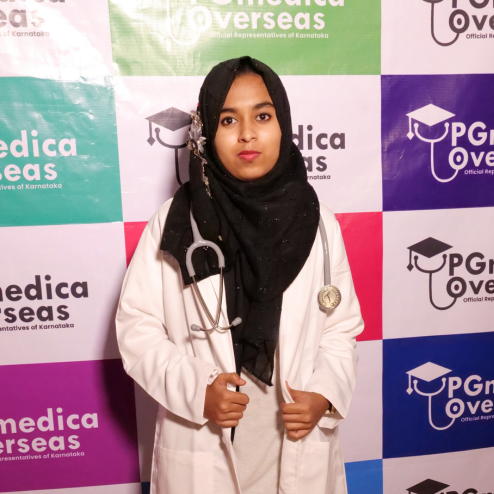
Many agencies forget you after admission, but PGMedica stayed by my side. They checked if I was comfortable abroad and offered solutions for anything I needed. It really made my transition smooth and less stressful.

Flight, insurance, forex - they helped with everything
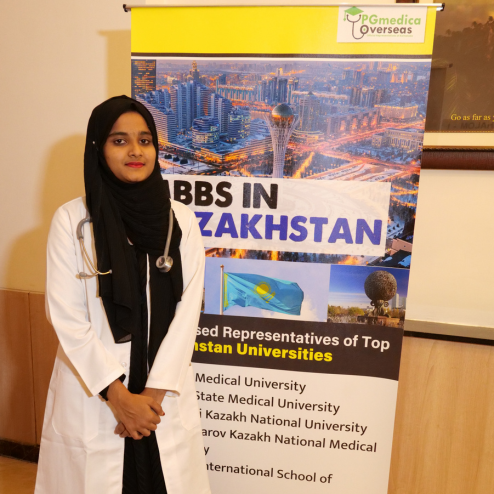
Flight, insurance, forex - they helped with everything
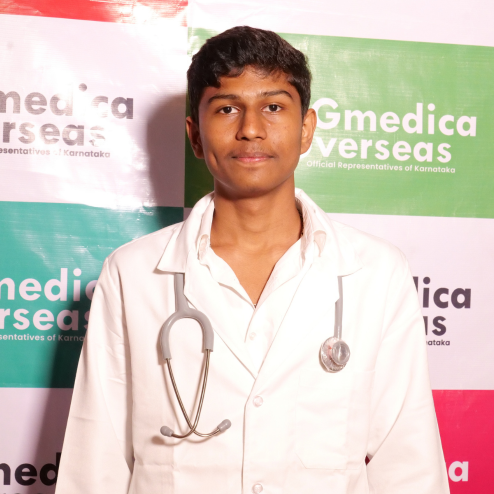
Choosing PGMedica was the best decision for my MBBS journey. Their professionalism, knowledge, and genuine care made the whole process very smooth. I couldn’t have asked for a better guide and supporter during such a crucial time.
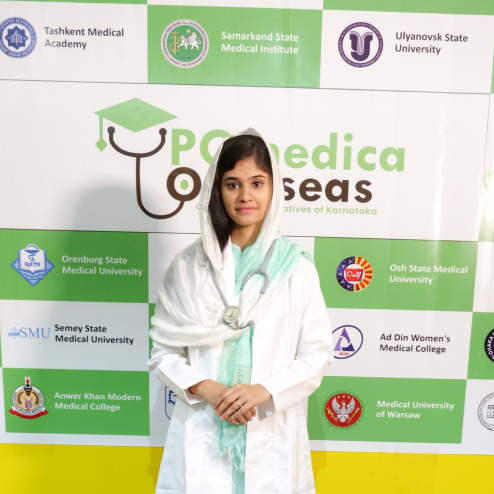
Experts. Period.
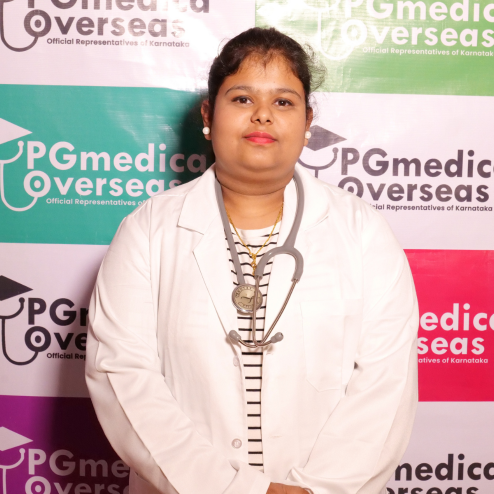
I didn’t miss any deadline thanks to them.. reminded me for every doc

Georgia vs Kazakhstan? They helped me pick the right one based on me not just rankings.

Thanks to PGMedica’s visa guidance, I got my student visa without any problems. They prepared me properly, helped me with all the forms, and even helped book flights.
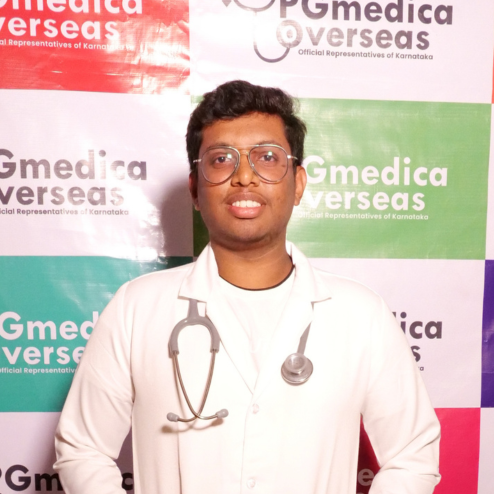
Vinutha ma’am was so patient with us.. Me and my dad asked many questions, she explained everything.
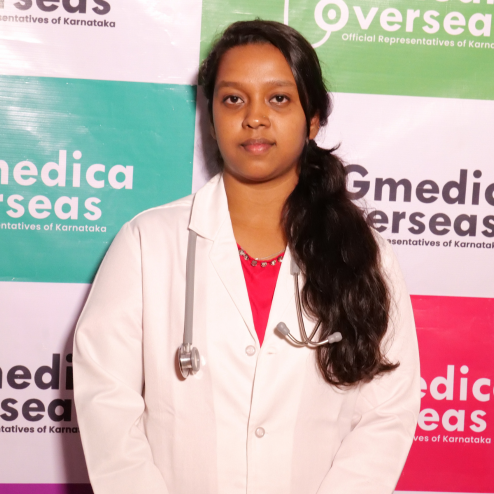
Didn't push me to join any random college like others.. gave me real suggestions based on my profile
Medical degrees obtained from recognized universities in Nepal are globally accepted and allow graduates to pursue medical practice or higher education in various countries. Below is an overview of the key accrediting bodies:
Nepal is considered a safe destination for international students, with low crime rates and a welcoming local community. However, students should follow basic safety precautions to ensure a smooth and secure stay.
Nepal is a peaceful country with a friendly atmosphere for international students. The crime rate is low, but students should remain cautious, especially in crowded areas and unfamiliar surroundings. Political demonstrations, while rare, can occur, so it's advisable to stay informed through local news and university updates.
Comparing MBBS in Nepal with other European countries helps students make informed decisions based on cost, duration, and global recognition.
| Country | Course Duration (Years) | Tuition Fees (USD) | Tuition Fees (INR) | Hostel Fees (USD/Month) | Hostel Fees (INR/Month) |
|---|---|---|---|---|---|
| Nepal | 5 + 1 Internship | $55,000 – $90,000 | ₹46 – ₹75 lakh | $100 – $150 | ₹8,000 – ₹12,000 |
| Russia | 5 + 1 Internship | $25,000 – $40,000 | ₹20 – ₹33 lakh | $120 – $180 | ₹10,000 – ₹15,000 |
| Germany | 6 | €0 (Public) | Free | €200 | ₹18,000 |
| Ukraine | 6 | $30,000 – $45,000 | ₹25 – ₹38 lakh | $100 – $150 | ₹8,000 – ₹12,000 |
| Philippines | 5 + 1 Internship | $35,000 – $50,000 | ₹29 – ₹42 lakh | $150 – $200 | ₹12,000 – ₹16,500 |
| Georgia | 6 | $30,000 – $45,000 | ₹25 – ₹38 lakh | $120 – $180 | ₹10,000 – ₹15,000 |
Join the countless successful doctors who began their journey with MBBS in Nepal.
Contact PGMedica Overseas for expert guidance, from choosing the best university to post-arrival support.
At PGMedica Overseas, your success is our mission!
Compared to private medical colleges in India, MBBS programs in Nepal can be significantly cheaper. However, factor in tuition fees, living expenses, travel costs, and potential additional fees.
To be eligible, you'll need to complete 10+2 with Physics, Chemistry, and Biology (PCB) and score at least 50% or above in these subjects (although some universities may have higher cut-offs). You must also qualify for the NEET (UG) exam and be at least 17 years old by December 31st of the admission year.
Yes, qualifying for the NEET (UG) exam is mandatory for Indian students seeking admission to MBBS programs in Nepal as of 2024.
Consider factors like university reputation, MCI recognition, FMGE pass rates, curriculum, faculty, facilities, and student reviews. PGmedica Overseas can assist you with personalised university recommendations based on your preferences.
Documents typically include transcripts, mark sheets, a migration certificate, character certificate, birth certificate, passport, photographs, medical fitness certificate, and proof of English language proficiency (if required). Requirements may vary by university, so check their websites for specifics.
Options include university hostels, private apartments/flats, and paying guest (PG) accommodations. Consider your budget, location preferences, and desired level of privacy when choosing.
<p>The MBBS course in Nepal includes <strong data-start="451" data-end="480">5 years of academic study</strong> followed by a <strong data-start="495" data-end="526">1-year mandatory internship</strong>.</p>
<p>The FMGE pass rate for Nepal graduates is around 30%, higher than many other countries.</p>
<p>Yes, MBBS degrees from Nepal are recognized by the National Medical Commission (NMC), allowing graduates to practice in India after clearing the NEXT (formerly FMGE) exam.</p>
<p>Yes, Nepal is a safe country with a friendly environment for international students. Universities have 24/7 security on campus.</p>
<p>Most medical universities have Indian mess facilities and restaurants serving Indian cuisine.</p>
<p>Yes, medical universities provide separate hostels for male and female students.</p>
<p>Yes, by clearing the NEXT/FMGE exam, graduates can register with the NMC and practice in India.</p>
<p>Scholarships such as the SAARC Scholarship, Mahatma Gandhi Scholarship, and Nepal Aid Fund Scholarship are available for Indian students.</p>
© PGMEDICA. All Rights Reserved